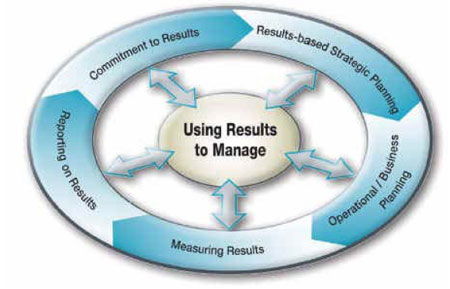
Previous page | ToC | Next page
The series of findings presented in section 2.0 leads one to conclude the following:
It is appropriate that the federal government be involved with these types of activities which preserve and protect the environment of Canada, as these activities both serve the public interest and respect the overall division of powers across governments.
However, the PE as well as the GBAP lack fundamental design elements which a program is expected to have, such as a vision and defined methodology for executing a Priority Ecosystem Approach (PEA), as well as criteria and systematic methods for the selection of activities. In addition, the elements of planning, implementing, monitoring, and reporting are not well carried out.
Partnerships constitute a principle for both the Priority Ecosystems and the Georgia Basin Action Plan; yet such extensive partnerships could not be located for the evaluation. The difficulty in securing this information indicates a problem for the program.
The financial basis of operations of the GBAP governance generates fundamental questions about how resources are used and linked to results. The activity costs some $5.5 million annually. Some 78 percent of these costs are classed for salary and operations and maintenance with no further cost details readily available. Funds have not been spent as allocated, with some 10 percent, 7 percent and 20 percent of such funds identified as surplus at year end for the last three years.
The GBAP lacks a rigorous and systematic performance measurement of its operations, making analysis and plausible attribution to outcomes difficult.
Given that EC is a results-based focused organization and that GBAP has such elements ingrained in its structure, it might prove useful to discuss the conclusions of this evaluation based on this construct. The graphic depicting managing for results is outlined below in Figure 2.
Figure 2: Managing for Results

(Source: www.tbs-sct.gc.ca/rma/account/transmod/tm02_e.asp#2)
In connecting these conclusions with the construct of results-based management, it appears that there have been some successful efforts to operate results at a Results-based Strategic Planning phase which is well linked to the high-level organizational objectives. Based on the evidence presented particularly in the relevance section, the need for the federal government, and specifically EC, is well supported in terms of jurisdiction and the public interest. However, the definition and actual operation of an ecosystem approach is so broad and non-exclusionary that the fundamental design elements of an ecosystem program remain illusive; its definition is unconstrained both in space and unbounded by technique. Continuing clockwise on the diagram, the next four phases prove troublesome.
The activities of operational/business planning—measuring results and reporting on them—all have significant deficiencies. It was not possible to trace a comprehensive trail from the initial project selection through to the delivery of its 77 projects. Active performance measurement is not implemented; in fact, even a basic inventory of projects, their leads, and expected and actual delivery of results is not available. Partners are the founding principles of ecosystem initiatives and the GBAP, yet many of the anticipated partners could not be found for surveys, interviews or focus groups. The program has never done an in-depth analysis of its reach, which is one of its critical building blocks.
In terms of the program expenditures, salary and O&M account for almost 78 percent of total program expenditures per year, with no further cost details readily available and Grants and Contributions account for between a fifth and a quarter of total program expenditures. Funds have not been spent as allocated, with some 10 percent and 22 percent of such funds identified as surplus at year end for the last two years. Given that no attribution between program activities/outputs and outcomes can be found, that no rigorous or systematic performance measurement is conducted and that the structure and ecosystem approach for PE remains undocumented, one must suspect that Canadians are not optimally getting value for money.
The last arc of the results circle is about reporting on results. This focuses on the reporting, in an integrated fashion, of results to Parliament. In that light, EC does have all the requisite vehicles for integrated reporting such as the Departmental Performance Report and the Report on Plans and Priorities. However, the GBAP as a program has serious deficiencies. The reporting on projects is anecdotal at best and the one annual report notes the highlights only of 15 selected projects and is silent on the remainder. The program's Management Information System is not regularly updated, and, according to some, not well designed. Clearly the reporting is devoid of completeness and comprehensiveness as well as regularity. Given this situation, the Department is not in a strong position to claim effective integrated reporting, at least for the Priority Ecosystems OPG.